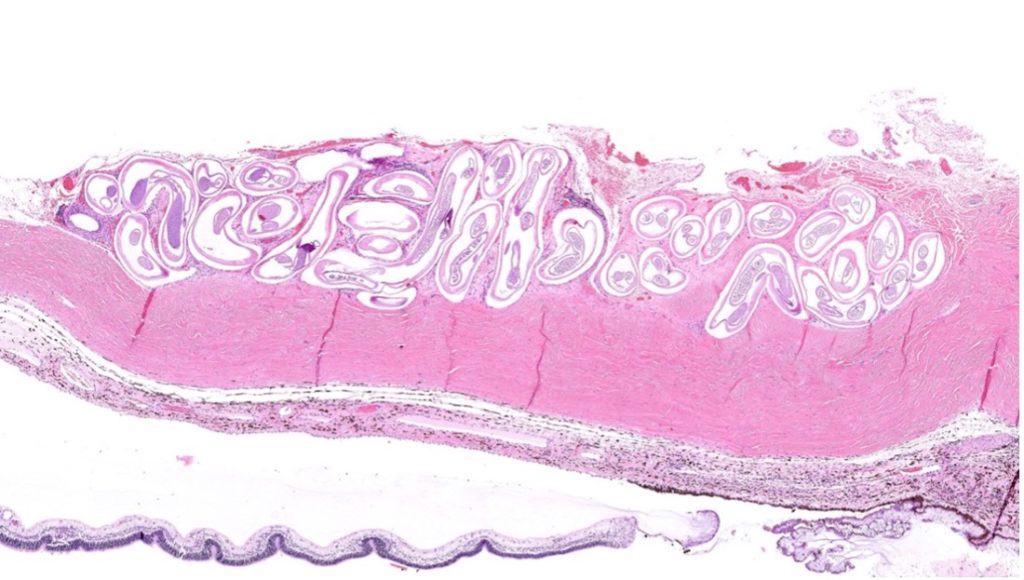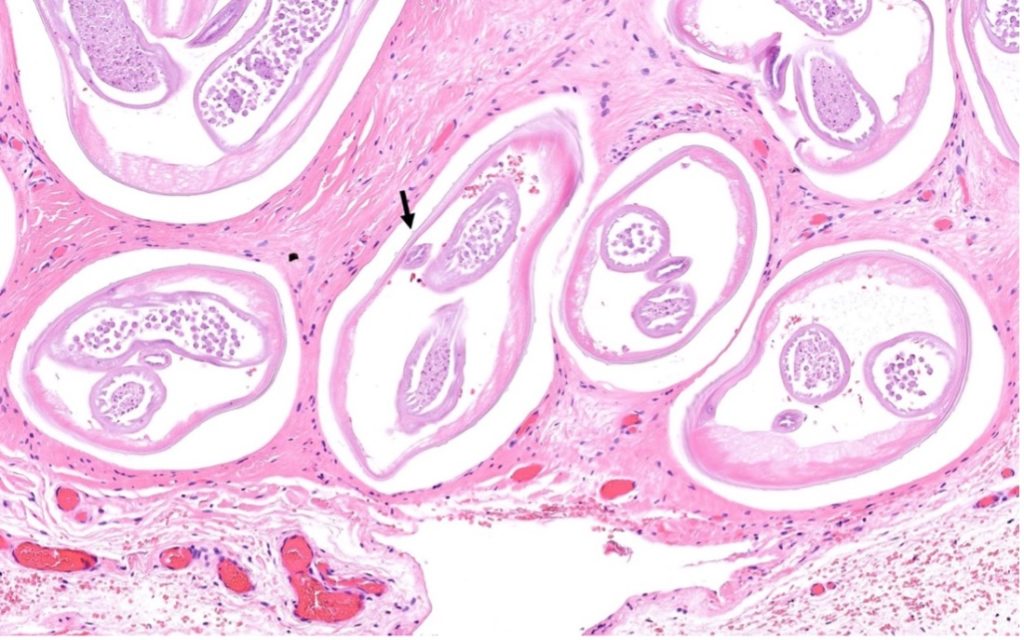Rare case of ocular onchocerciasis in a dog from south Texas
Erin Edwards, DVM, MS, DACVP and Mindy Borst, LVT
A formalin-fixed globe from an 11-year-old, castrated male, Pitbull dog was submitted to the Texas A&M Veterinary Medical Diagnostic Laboratory (TVMDL) as a biopsy. The patient was from south Texas with an unknown travel history. The dog was reported to have a history of corneal ulceration, and enucleation was performed when perforation occurred. Histologically, the most significant finding was the presence of corneal perforation with severe keratitis and anterior iris synechaie. Additionally, two long, filarid nematodes were discovered embedded in the episcleral tissues. One of these parasites was degenerated and surrounded by granulomatous inflammation, while the other was intact and lacked surrounding inflammation. Cuticular ridges were observed on the parasites, classifying them in the Onchocerca genus.
Onchocerca spp. are filarid parasites that are transmitted by black flies. In dogs, the adult parasites tend to burrow in the episcleral or periocular tissues. They are often an incidental finding, but have been associated with conjunctivitis, third eyelid prolapse, exophthalmos, uveitis, and retinal detachment. In this case, it is postulated that the onchocerciasis could have caused exophthalmos with secondary traumatic corneal ulceration and subsequent perforation. In the United States, most cases of documented canine onchocerciasis have been from the southwestern United States, primarily California and New Mexico. Onchocerciasis in the state of Texas is extremely rare and is poorly documented, making this a unique case seen at TVMDL.
Reference:
- McLean, N. J., Newkirk, K., & Adema, C. M. (2017). Canine ocular onchocerciasis: a retrospective review of the diagnosis, treatment, and outcome of 16 cases in New Mexico (2011-2015). Veterinary Ophthalmology, 20(4): 349-356.

